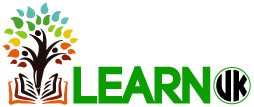Diversity in the Workplace: ILM Qualifications for Inclusivity and Equity
Diversity in the workplace is being embraced as a requirement. In an effort to foster productive working conditions for all workers, businesses are increasingly relying on a wide range of methods and resources. ILM Level 2 Training and ILM Qualification are two such tools that help advance workplace diversity, equality, and inclusion.
Table of Contents
The Significance of ILM Qualifications
The Institute of Leadership and Management (ILM) is a well-respected institution that provides many credentials to hone managerial and leadership abilities. The use of these skills is growing in support of the development of diverse and inclusive workplaces despite their traditional association with leadership training.
ILM Level 2 Training
Training at the ILM Level 2 introduces participants to the fundamentals of effective leadership and management. This program’s broad availability makes it a great tool for encouraging tolerance and acceptance among workers.
Diversity in the Workplace: A Necessity
Diversity in the workplace is the range of individual qualities and life experiences that workers bring to their jobs. Gender, age, race, sexual orientation, physical ability, and other characteristics fall into this category. There are several advantages to having a diverse workforce, including better problem-solving skills, more creative ideas, and new views.
However, variety on its own is not sufficient. In order to reach its full potential, businesses must create a welcoming atmosphere in which people from all walks of life feel accepted and appreciated. The potential of a diverse workforce can only be fully realised, and workplace equality achieved via inclusive practises.
The Role of ILM Qualifications in Promoting Diversity
Individuals may gain the knowledge and experience to become excellent leaders and managers by obtaining an ILM Qualification. Several advantages may be gained by having these traits in a diverse workplace:
Awareness and Sensitivity
Participants in ILM Level 2 Training are pushed to consider the effects of different leadership styles on their teams. When it comes to encouraging tolerance and acceptance, this information is priceless. It helps managers and leaders understand their employees’ varied backgrounds and perspectives so they can better serve them.
Inclusive Leadership
The significance of diversity and inclusion in leadership is emphasised in the ILM Standards. Inclusive leaders do so because they see the value in diversity. They make it such that everyone feels appreciated for their efforts. Taking this tack is crucial in creating a welcoming work environment for all employees.
Conflict Resolution
Disagreements might arise when team members from different walks of life have to work together. ILM Training provides leaders with the tools they need to successfully confront and manage conflict. This shows that the company values diversity and inclusion in the workplace and helps maintain a positive work atmosphere.
Communication Skills
In a multiethnic workplace, clear and constant communication is a must. When working with employees from diverse cultural backgrounds, the ability to effectively communicate is more crucial than ever. One of the most important components of diversity and inclusion is open and polite dialogue.
The Benefits of an Inclusive and Diverse Workplace
Many positive outcomes may result from fostering a diverse and inclusive work environment.
- Improved Decision-Making: Teams that are culturally and linguistically diverse are better able to make sound decisions. The possible dangers and novel approaches to problems may be better understood when several perspectives are considered.
- Increased Employee Engagement: Workers have a sense of belonging and safety in an inclusive workplace. This increases their enthusiasm, which in turn increases their output and decreases their likelihood of leaving.
- Enhanced Innovation: Inspiring new ideas is easier while working in a diverse group. To survive in today’s ever-evolving market, companies must foster an innovative culture.
- Broader Market Reach: A more inclusive and varied workforce is better able to serve its customers. This has the potential to broaden your consumer base and strengthen your relationships with clients of all demographics.
- Positive Reputation: Businesses that actively promote equality and inclusiveness often win widespread public support. People are more willing to do business with and work for companies that demonstrate a commitment to diversity and inclusion. For more guidance how you can enhance your business efficiency, check out sources like https://clipchamp.org.
Implementing ILM Qualifications for Diversity and Inclusivity
Organisations should think about the following in order to get the most out of ILM Qualifications in terms of promoting diversity and inclusivity:
Assess Training Needs
First, you should assess the training requirements of your company. Determine where you think ILM Level 2 Training or other ILM Qualifications would have the most effect. Improvements in leadership, communication, and conflict resolution are all possible.
Customise Training Programs
Tailor ILM Qualification programmes to your organisation’s unique diversity and inclusion issues. Training that is tailored to your company and its workers has the greatest chance of really improving performance.
Make Training Accessible
Guarantee that all workers, especially those from traditionally underrepresented groups, have equal opportunity to participate in ILM Qualification programmes. This encourages more people to have access to growth possibilities.
Monitor Progress
Keep an eye on how those workers who have completed ILM Qualification courses are doing. Keep tabs on how they’re doing as a leader and how they’re affecting diversity and inclusion at work.
Celebrate Successes
Honour those who have gone above and beyond to foster an environment where everyone feels welcome. Recognising and appreciating such efforts shows that the company appreciates them.
Conclusion
Companies who invest in their employees by offering them ILM Qualifications like ILM Level 2 Training demonstrate their dedication to diversity and inclusion in the workplace while also enhancing their management and leadership skills. Using the skills and information acquired via ILM Qualifications, businesses can design environments that foster innovation, employee engagement, and equality. The beneficial effects on the company’s brand and customer base will be felt well beyond the office walls.

